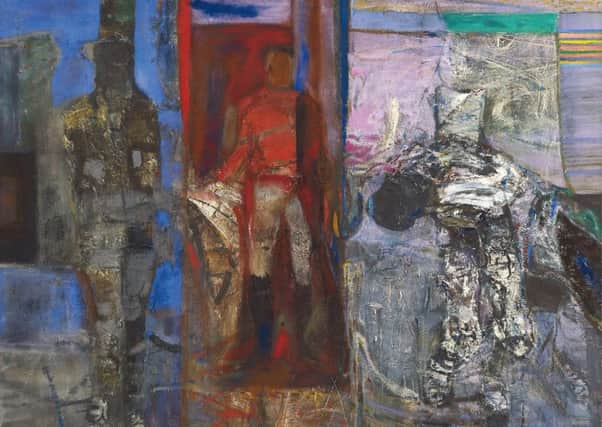Book reviews: Robin Philipson by Elizabeth Cumming | The Art and Craft of Gertrude Alice Meredith Williams by Phyllida Shaw


Although very much part of the story of Scottish art, both artists were born in England. Alice Meredith Williams, as she is generally known, came from Liverpool. Philipson was Cumbrian by birth, but from the age of 16 went to school at Dumfries Academy and thence to Edinburgh College of Art. He received his diploma in 1940 and was immediately conscripted into the King’s Own Scottish Borderers, serving in India. In October 1948, he joined the staff of Edinburgh College of Art and 12 years later succeeded William Gillies as head of painting, a post he held until 1982. From 1973 to 1983 he was president of the Royal Scottish Academy, and at the time that brought a knighthood. As Cumming documents, however, his dedication to the RSA was only a small part of his engagement with public life.
As an artist, Philipson was prolific and Cumming details his extensive exhibition history while also tracing his evolution as a painter. He was always engaged with what he called “the craft of painting”, and she gives interesting insights into his often elaborate techniques. She describes how he sought motifs like his famous cockfights, for instance, that would give him scope for technical invention, although she doesn’t really question the tension between technique and subject this implies. This is, however, an excellent biography of an important and influential figure.
Advertisement
Hide AdAlice Meredith Williams came to Scotland from Liverpool in 1906 when her husband, Morris Meredith Williams, was appointed art master at Fettes College in Edinburgh. The couple had met as students in Paris. There she had been encouraged by Rodin and had already made some distinguished sculpture. By 1906, she was having success designing for the ceramic industry with great skill in the contemporary Art Nouveau idiom. An all-rounder, she designed stained glass and was a remarkable painter. In Edinburgh she continued to work to commission, but also exhibited some exquisite sculpture. She often cooperated with her husband until he was called up in 1915. She spent the war years in Oxfordshire, partly working on a farm, but the tragic losses of the conflict brought a boom time for artists and she was engaged on memorial windows even before it had ended.
Her big break came with a commission for a series of polychrome tableaux of women’s war work for the new Imperial War Museum. Exhibited in 1920 and seen by Robert Lorimer, these in turn led to the collaboration with him that was to produce a series of major sculptural commissions. The first was the four-and-a-half-ton bronze group, Spirit Of The Crusaders, atop a 30ft column for the Paisley War Memorial. The most important, however, was for the Scottish National War Memorial where she was lead sculptor. This included the monumental frieze done in collaboration with her husband, the steel casket, and much else including, uniquely and almost certainly on her initiative, the monument to Scottish women. She collaborated with Lorimer on several other projects and continued to work independently in Scotland, England and elsewhere, but died in 1934 aged 56.
Her work is beautiful. In the biased perspective of conventional art history it may seem conservative, but due to its scale and enduring public impact Williams was probably the most important woman artist of the 1920s. In spite of that, Phyllida Shaw has had to publish this book privately. British publishers should hang their heads in shame. - Duncan Macmillan
Robin Philipson, by Elizabeth Cumming, Sansom Press, £30
The Art And Craft Of Gertrude Alice Meredith Williams by Phyllida Shaw, www.alicemeredith williams.com